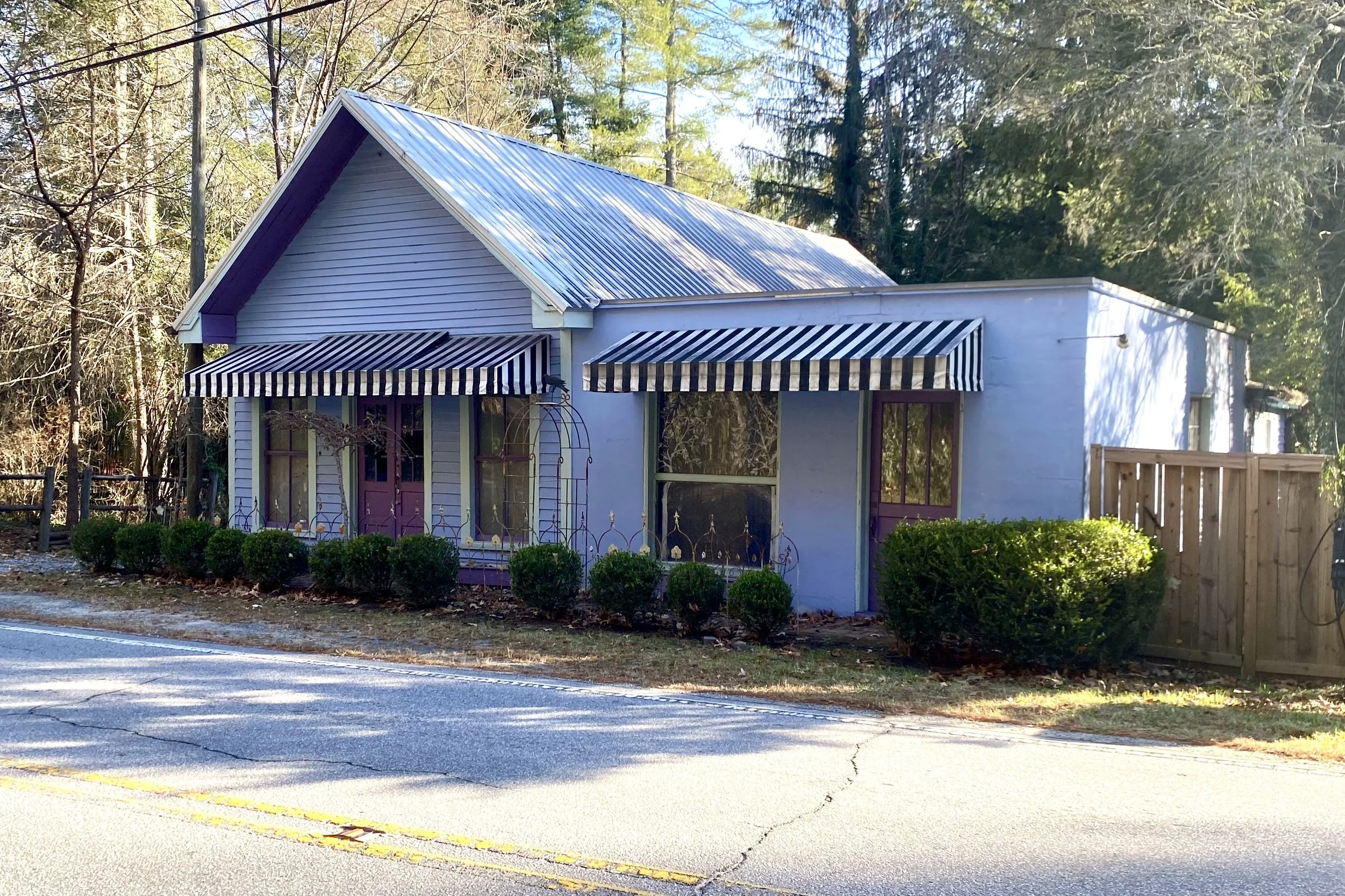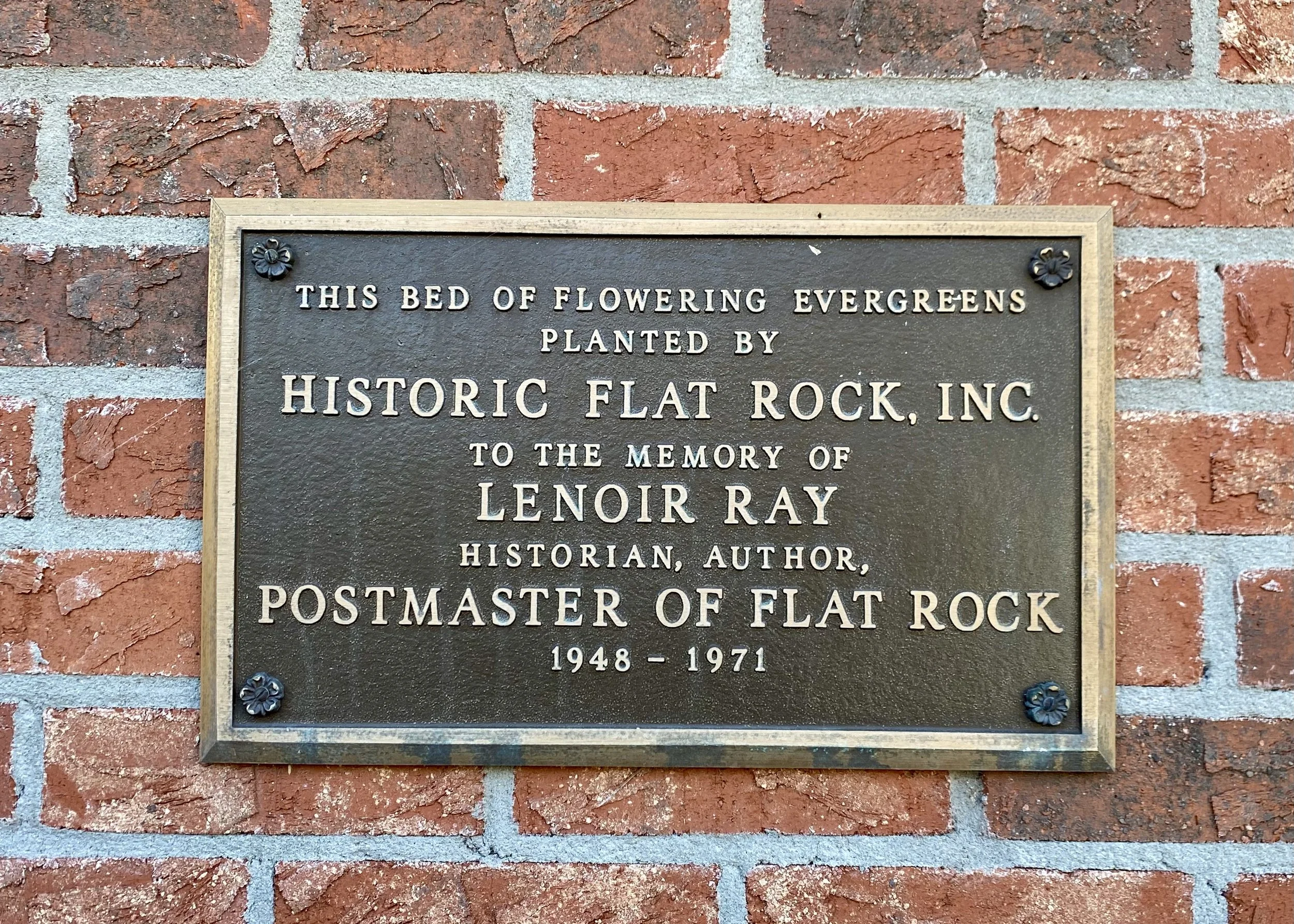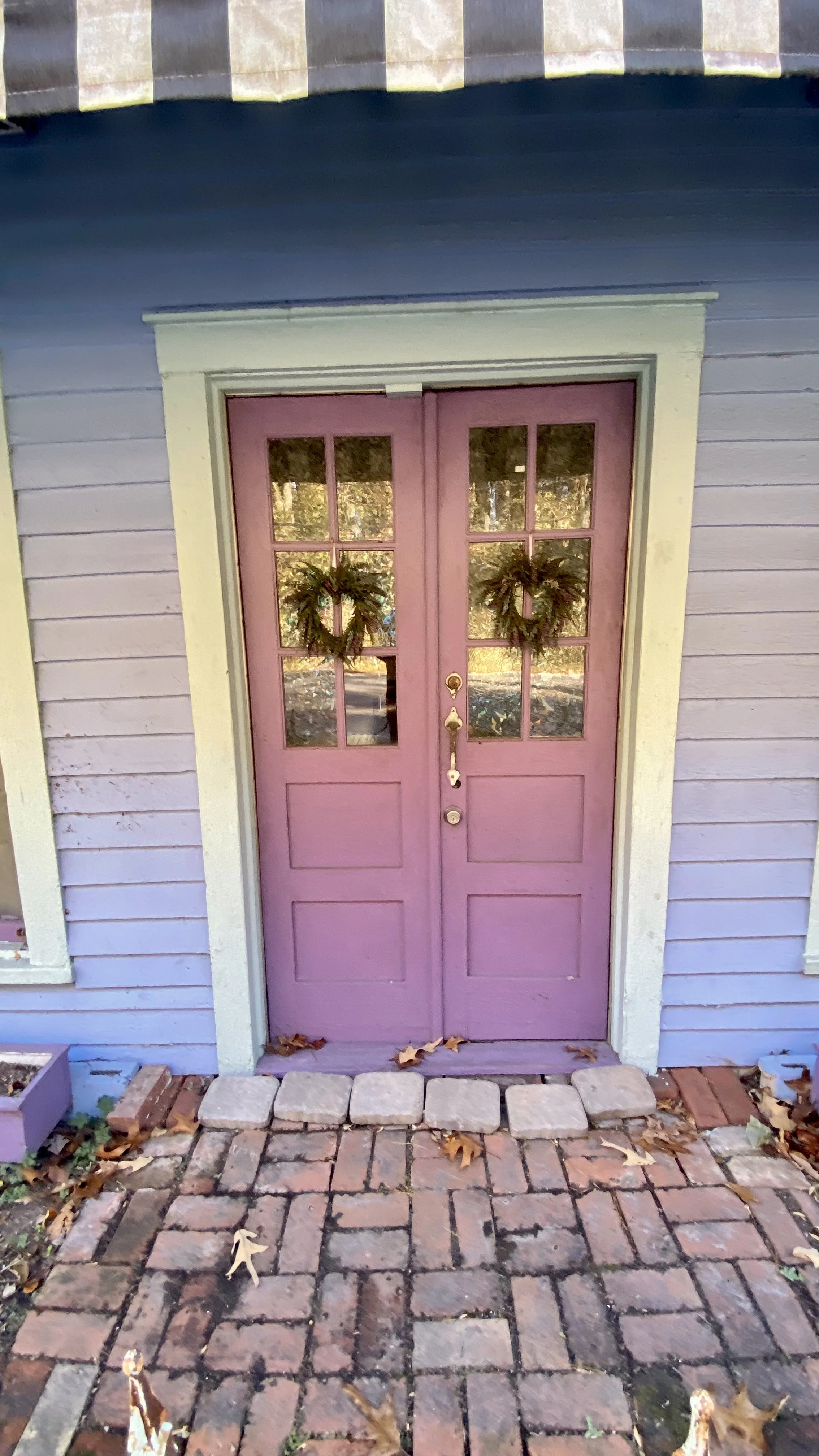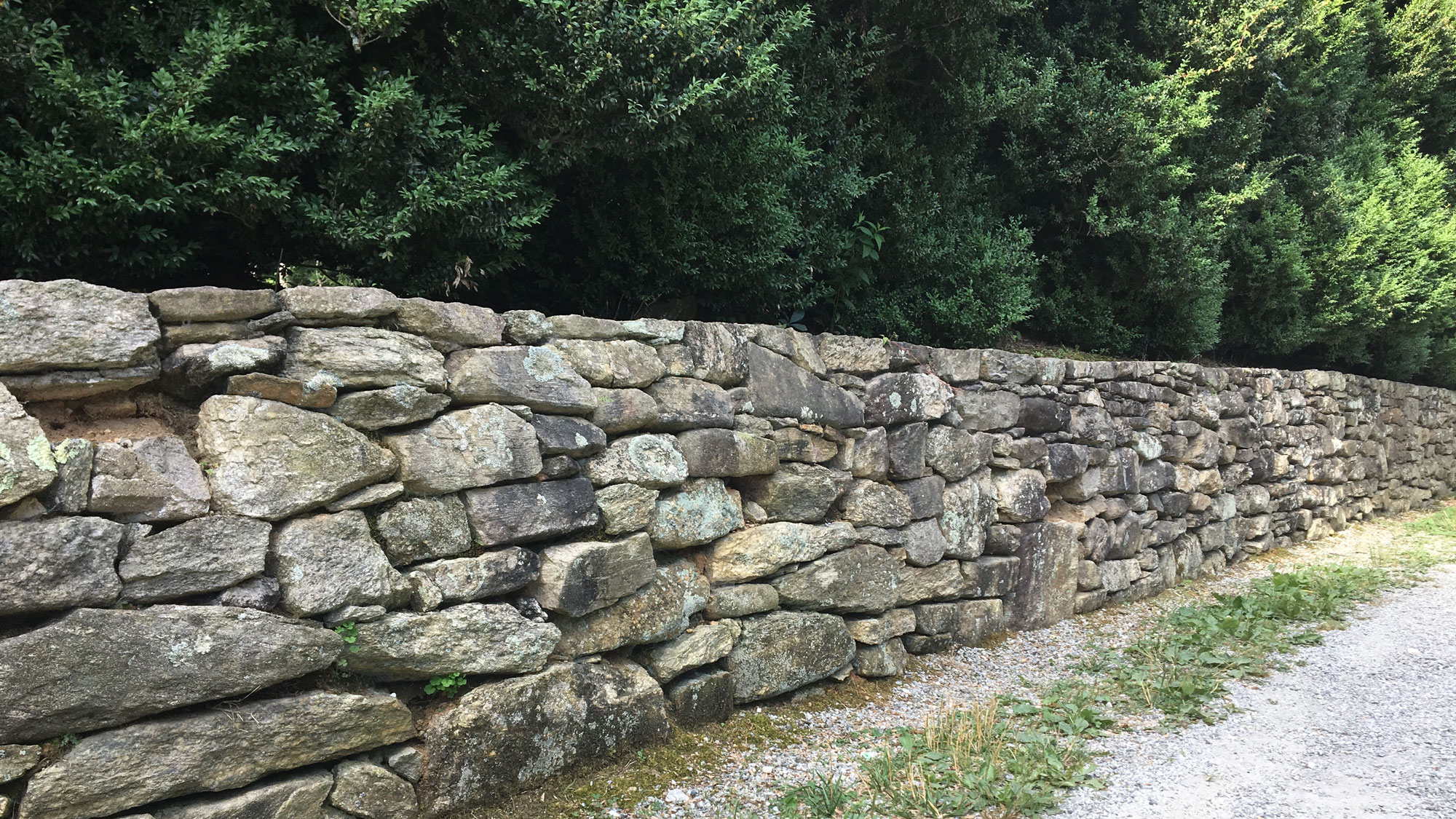The Patton Store: A Small Building with a Big Flat Rock Story
/The patton Store, 2622 Greenville Highway
Every day, hundreds of drivers rush north through Flat Rock along Greenville Highway, speeding past the Blue Ridge Fire Station and the Flat Rock Playhouse while a forlorn 25-mph sign goes largely unnoticed. As the road bends gently to the right, most never see the small, brightly painted purple building pressed close to the shoulder beneath distinctive, striped awnings.
Blink, and you’ll miss it.
Yet this modest structure—so easy to overlook today—once played a central role in Flat Rock’s early civic and commercial life. According to the Historic Nomination document for Flat Rock (HN 1852), the building at 2622 Greenville Highway is known as the Patton Store, a one-story, front-gable frame commercial building dating to the late nineteenth century. Its significance comes not only from its age, but from the many roles it played in the community’s early history.
The Early Postal Story
After the Civil War, Flat Rock’s post office changed hands often—sometimes within the same family. Peter Stradley, who had built the ca.1844 structure now known as the “Old Flat Rock Post Office,” was removed from his position. His son, Cephas Stradley, took over on June 25, 1866. Cephas ran a store in Flat Rock and later married Nancy Patton, but when the couple moved to Dalton, Georgia, his sister Salome Stradley assumed the duties on December 9, 1868. She became Flat Rock’s first female postmaster and served for nearly nine years.
Letter postmarked Flat Rock 1887
Salome was succeeded on August 1, 1877, by John P. Patton (1853–1921) who was married to Salome’s niece. Patton operated a store just north of the old Stradley building and moved the post office to his own shop at 2622 Greenville Highway – today referred to as the Patton Store.
The change of venue was short-lived, however. When Matthew S. Farmer became postmaster in 1879, he moved the post office back to the Stradley building, where his brother-in-law James Ripley ran a store. Farmer, meanwhile, had just taken over management of the Farmer Hotel (later the Woodfield Inn and currently the Mansouri Mansion) and likely played only a modest role in the daily postal work even though he held the title until 1897.
Once Patton’s brief tenure as postmaster ended, one would assume he returned to running his general store. But the little Patton Store had not seen the last of postal business. It would again become Flat Rock’s post office 43 years later.
A Second Chance: The Automobile Era Arrives
When John P. Patton died in 1921, his building became available once again. By then, the arrival of automobiles was reshaping commerce and public services - even in a small community like Flat Rock.
In March 1922, Walter F. Justus replaced John Seymour Jones as postmaster. Justus hoped to install gasoline pumps in front of the Stradley building, but Jones, who owned the Old Flat Rock Post Office building by then, refused to allow it.
As a result, on July 1, 1922, Justus moved the post office back to the Patton Store, where a single hand-cranked gas pump now stood out front. The little building now served as both service station and postal counter - a clear sign of changing times. The Patton Store would remain as the location of Flat Rock’s post office until 1953.
---
In the years that followed, the Patton Store continued to evolve along with Flat Rock itself. In 1939, A. Campbell King, grandson of Judge Mitchell King, purchased the building and assumed the duties of postmaster. Then, in 1947, Jimmy Harris bought the property with plans to open a grocery. At that time, the building had only five pendant lights and no indoor plumbing, so Harris added the concrete-block wing to improve lighting and sanitation for the post office and opened Harris Grocery in the original frame section.
The last postmaster to serve in the Patton Store was Lenoir Ray, who served as postmaster from 1948 to 1971. Ray was not only postmaster but also a respected author and historian, best known for Postmarks: A History of Henderson County 1787–1968.
Poet, musician, and Pulitzer Prize–winning writer Carl Sandburg, who moved to Flat Rock in 1946, would have mailed his manuscripts from the Patton Store location and was said to have attended the informal music gatherings held there.
post Card featuring The Rag Doll Gift Shop
In 1953, the postal pendulum swung once more, and the post office returned to its longtime home in the Stradley Building (now 118 Village Center Drive.) The grocery in the Patton building continued until 1956, when Harris sold the property to Marion Ford Mann, who operated the Rag Doll Gift Shop in the building for the next four decades, well into the 1990s.
Local historian Missy Izard has many fond memories of the gift shop:
“Growing up, our family would come to Lake Summit every summer. Trips to Hendersonville and Flat Rock were always a highlight, but my favorite destination by far was the Rag Doll Craft Shop in Flat Rock. I was completely captivated by the craftsmanship of the dolls made by the shop’s owner.
The Rag Doll Craft Shop was one of those places I always assumed would be there forever. It felt woven into the very fabric of Flat Rock, one of the landmarks that made each visit to town feel special. So naturally, when I had children of my own, a trip to the Rag Doll Craft Shop was at the top of our agenda whenever we came to the mountains.”
In 2006, the building was reincarnated once again when Back Home Magazine moved in. The magazine had been founded by former Mother Earth News employees who chose to remain in Henderson County after Mother Earth’s departure in the late 1980s. Led by Richard Freudenberger, Back Home occupied the Patton Store building until 2013.
The Patton Store was later purchased by a textile/fiber artist who, appropriately enough, created one of kind Art Dolls, faeries, mermaids, and birds, unique knitted handbags, felted dream pillows, and other objects of art.
The home is currently listed as a rental property.
Modern Postal History and a Lasting Sentiment
Flat Rock’s post office remained in the Stradley Building until February 1965, when the current “modern” post office was completed directly across Greenville Highway. Postmaster Lenoir Ray—who had served Flat Rock for 18 years—retired just a week before the dedication. His book, Postmarks, remains a valuable resource for understanding Henderson County’s postal heritage.
In that book, Ray shares an anecdote that captures how deeply the post office - and by extension, the community itself - shaped local identity long before Flat Rock was incorporated in 1995.
A woman from Charleston who owned property on Highland Lake received a tax notice from the town of East Flat Rock. Upset, she rushed to the courthouse, less concerned about the tax itself than the implication that she no longer “belonged” to Flat Rock. After hearing her out, the tax collector offered a Solomonic reassurance:
“My dear lady,” he told her, “You may pay the tax and still be a resident of Flat Rock, for Flat Rock is not a place, but a state of mind.”
More than a century later, that sentiment still resonates. And the little purple building on the bend in the road—once a store, a post office, a gas stop, a grocery, a gift shop, and a magazine office—remains a reminder of Flat Rock’s layered past and the enduring sense of place that it helped shape.
###
Sources for this story
-North Carolina Postal Historian. Link here: https://www.ncpostalhistory.com/wp-content/uploads/2020/05/NCPHS_Journal-146-2019-Spring.pdf
-NATIONAL REGISTER OF HISTORIC PLACES
Flat Rock Historic District, Boundary Increase, Boundary Decrease,
and Additional Documentation
Flat Rock, Henderson County, HN1352, Listed 2/27/2015
https://historicflatrockinc.com/wp-content/uploads/2018/08/HN1352.pdf
- Postmarks: A History of Henderson County, 1787-1968 by Lenoir Ray, a former postmaster of Flat Rock.
-Additional research graciously provided by Missy Izard and Miriam Hughes

















